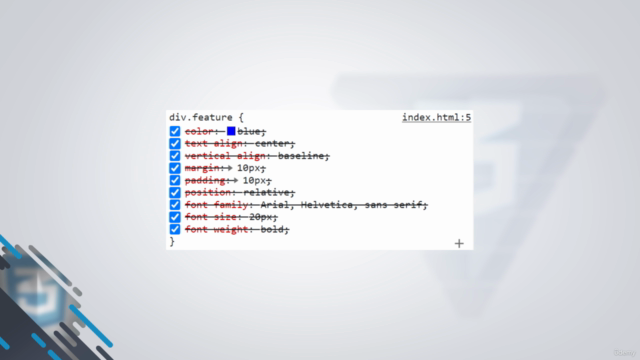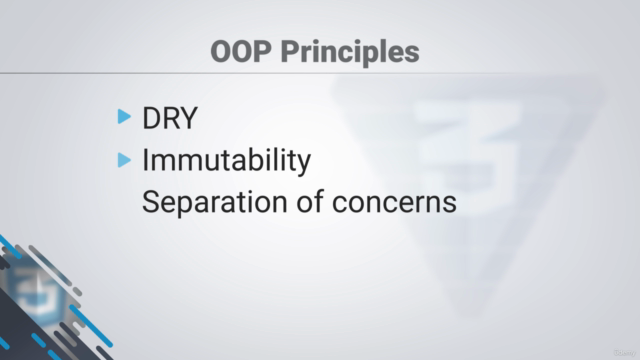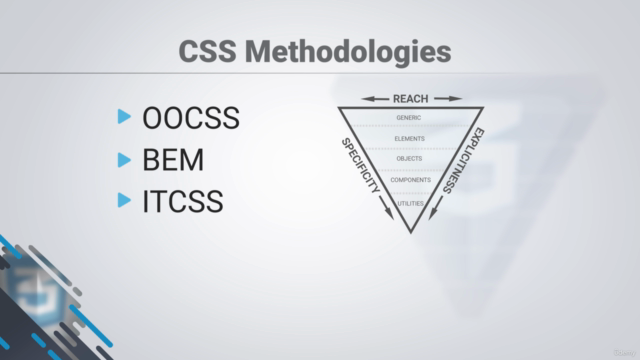Clean and Scalable CSS Architecture (2023)

Why take this course?
🌐 Master Clean & Scalable CSS Architecture (2023) with Vislavski Miroslav
Course Headline:
🚀 Write Clean CSS, Master Modular & Scalable CSS Architecture
Introduction: CSS is often considered a straightforward language, but as projects grow in complexity and size, the challenges it poses become apparent. The global scope of CSS, its mutable nature, dependency on source order, and the perils of specificity can all lead to a tangled web of code that's hard to maintain and scale. 🛠️
The Struggle with Traditional CSS:
- Global Scope Headaches: A simple change in one file can have cascading effects on unrelated elements or pages.
- Mutable Confusion: CSS's inherent mutability leads to confusion, with each change potentially causing unexpected outcomes.
- Source Order Dependency: Your styling can be overridden by the order in which your CSS is parsed.
- Specificity Snags: High specificity can nullify even the most carefully structured code.
- Unmanageable Growth: As projects expand, maintaining a single, cohesive style sheet becomes increasingly difficult.
The Need for Change: While CSS has remained largely unchanged since 1998, preprocessors like SASS and Less have offered partial solutions by compiling to CSS. Yet, the core issues of CSS remain unsolved. We're caught in a cycle: writing more CSS to fix problems caused by old CSS! It's time for a better approach to ensure our CSS is Predictable, Reusable, and Maintainable. 🔄
Course Goals: This course aims to teach you how to write CSS that doesn't just adhere to best practices but sets new standards for maintainability and scalability. We will explore how to:
- Embrace Predictability: Ensure CSS rules behave as expected, every time.
- Create Reusable Components: Develop patterns that can be reused across projects without reinvention.
- Maintain with Ease: Update features and components without the need for extensive refactoring or breaking existing code.
Applying OOP Principles to CSS: We'll take the Object-Oriented Programming (OOP) principles you know from languages like Java, PHP, or C# and apply them to CSS. This includes:
- DRY (Don't Repeat Yourself): Write code once, use it everywhere.
- SOLID Principles: Build a system that is robust and resilient to change.
- Object-Oriented CSS (OOCSS): Separate structure from skin.
- Block, Element, Modifier (BEM): Establish a naming convention for more effective communication within your team.
Course Focus: While there are numerous advanced courses on flexbox, CSS animations, and grid, this course zeroes in on the architecture of CSS itself. If you're looking to write clean and scalable CSS code for complex projects, this is where you should start! 🎓
Why Take This Course?
- Real-World Solutions: Learn from experienced instructor Miroslav Vislavski, who has faced these challenges firsthand.
- Actionable Strategies: Gain practical skills to apply immediately in your projects.
- Future-Proof Skills: Equip yourself with techniques that ensure your CSS remains manageable as projects scale.
Join the CSS Revolution: This is the course I wish I had when I began working on more complex projects. If you're ready to transform the way you approach CSS, enroll in Clean and Scalable CSS Architecture (2023) today and write CSS that stands the test of time and complexity! 🆘
Enroll Now and Elevate Your CSS Skills to the Next Level!
Course Gallery




Loading charts...